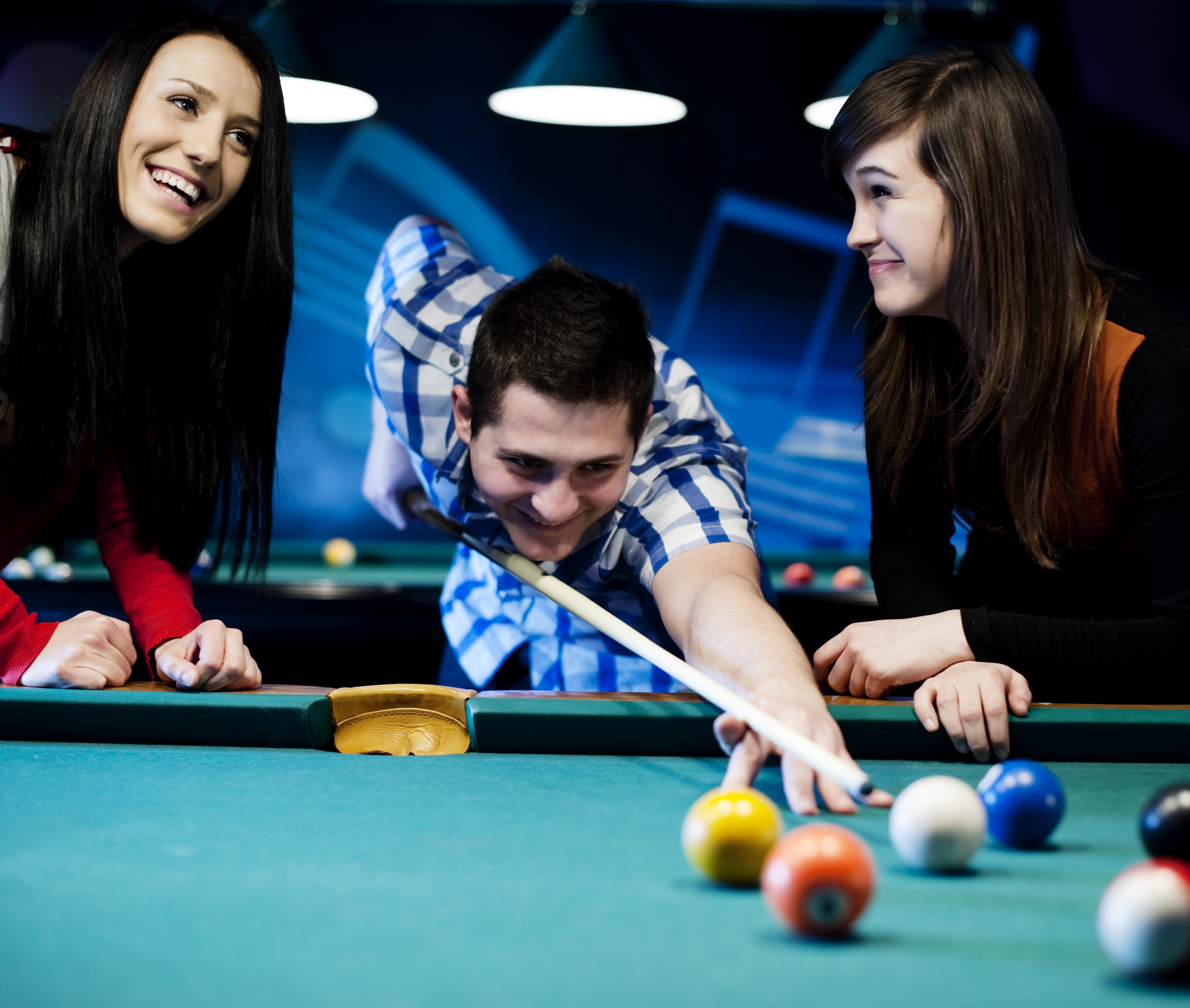So, you’ve decided to delve into the exciting world of pool. Congratulations! Whether you’re a complete novice or looking to brush up on your skills, mastering the basics of using a pool table is essential. In this comprehensive guide, we’ll walk you through everything you need to know to get started.

Getting Acquainted with the Pool Table
Before we dive into gameplay, let’s familiarize ourselves with the pool table. A standard pool table is rectangular in shape, typically measuring 9 feet in length and 4.5 feet in width. It is covered with felt, usually green, and features six pockets – one in each corner and one in the middle of each long side.
Understanding the Equipment
To begin your journey in pool, you’ll need the right equipment. The most crucial items include:
Pool Cue: A pool cue is a long, tapered stick used to strike the cue ball.
Cue Ball: The solid white ball that players strike with the cue stick.
Object Balls: These are the numbered balls (1 through 15) that players aim to pocket.
Chalk: Chalk is applied to the tip of the cue stick to prevent miscues.
Triangle Rack: Used to rack the balls at the beginning of each game.
Learning Proper Technique
Now that you have the necessary equipment, it’s time to learn how to use it effectively. Follow these steps to master the basic technique:
- Grip: Hold the cue stick with a relaxed grip, keeping your hand steady.
- Stance: Stand with your dominant foot forward and your body parallel to the table.
- Bridge: Form a bridge with your hand by placing it on the table, creating a stable platform for the cue.
- Aiming: Align your cue stick with the desired target on the object ball.
Follow Through: After striking the cue ball, maintain a smooth follow-through motion.
Understanding the Rules of Play
Before you start playing, it’s essential to understand the basic rules of pool. While there are several variations of the game, we’ll focus on the most common version: Eight-Ball.
Objective: The primary goal of Eight-Ball is to pocket all of your designated balls (stripes or solids), followed by the 8-ball.
Opening Break: The game begins with the opening break, where the cue ball is struck from behind the headstring, aiming to scatter the balls.
Turn Taking: Players take turns attempting to pocket their designated balls. If a player fails to pocket a ball or commits a foul, it becomes the opponent’s turn.
Winning: The game is won by the player who legally pockets all of their designated balls and successfully sinks the 8-ball.
Mastering Spin Shots
One of the hallmarks of a skilled pool player is the ability to use spin to control the trajectory of the cue ball. Mastering spin shots involves understanding the effects of English – side spin – on the cue ball. Experiment with different angles and spin combinations to gain a deeper understanding of ball control.
Strategic Positioning
In pool, positioning is key. Knowing where to place the cue ball for your next shot can make all the difference in your gameplay. Practice thinking several shots ahead, considering not only how to pocket your current ball but also how to set up for your next shot.
Advanced Shot Selection
As you become more proficient in pool, you’ll encounter situations that require advanced shot selection. Whether it’s a difficult bank shot or a precise combination shot, knowing when to take calculated risks can give you the upper hand in a game.
Understanding Defensive Play
Defense is just as important as offense in pool. Knowing how to play safe – by leaving your opponent with a difficult shot or strategically placing the cue ball – can frustrate your opponent and give you a significant advantage.
Practicing Consistency
Consistency is the mark of a true pool master. Dedicate time to practice regularly, focusing on maintaining a steady stroke and honing your skills. Whether you’re practicing solo drills or competing against friends, consistency is key to improvement.
Conclusion
Becoming proficient in pool table requires dedication, practice, and a willingness to learn. By mastering the basics, experimenting with advanced techniques, and developing strategic gameplay, you can elevate your pool game to new heights. So grab your cue stick, chalk up, and get ready to become a pool pro!





